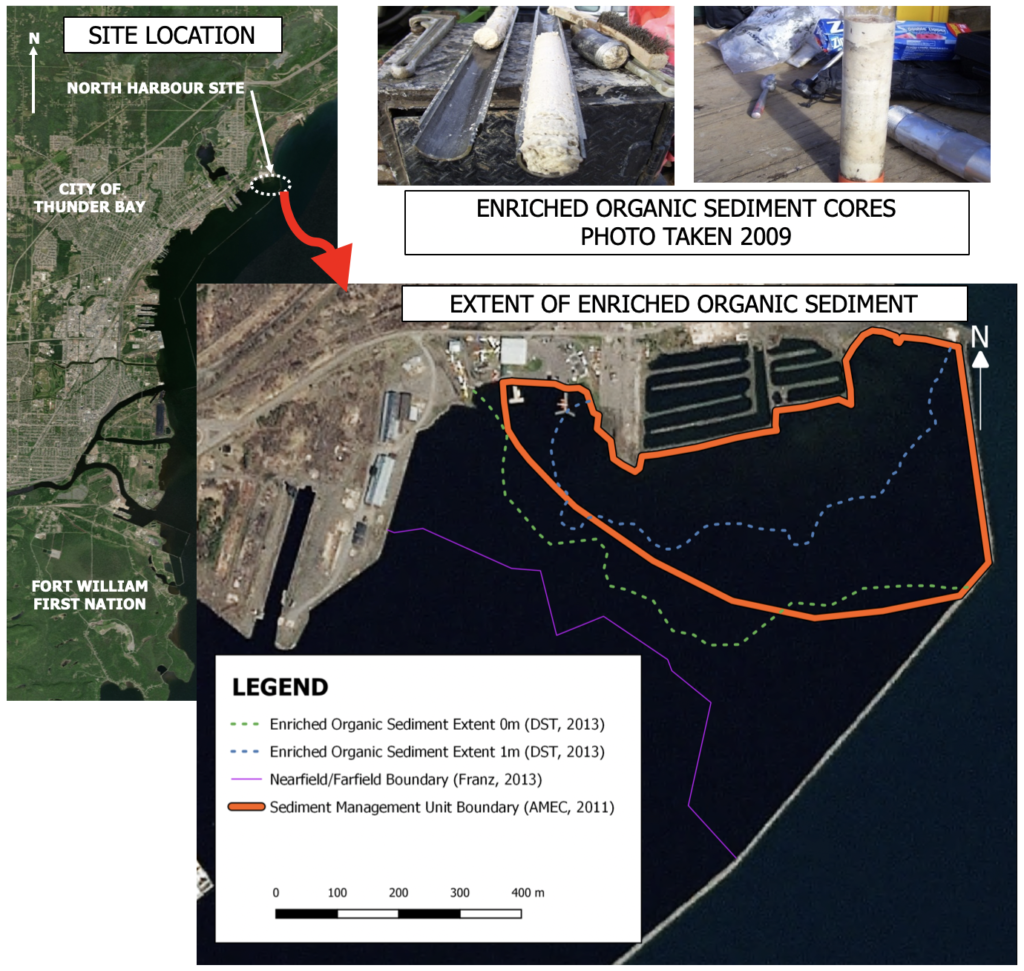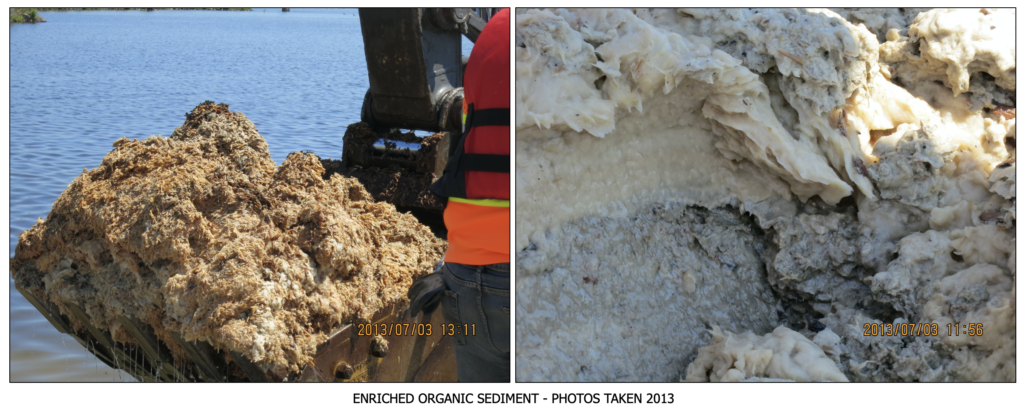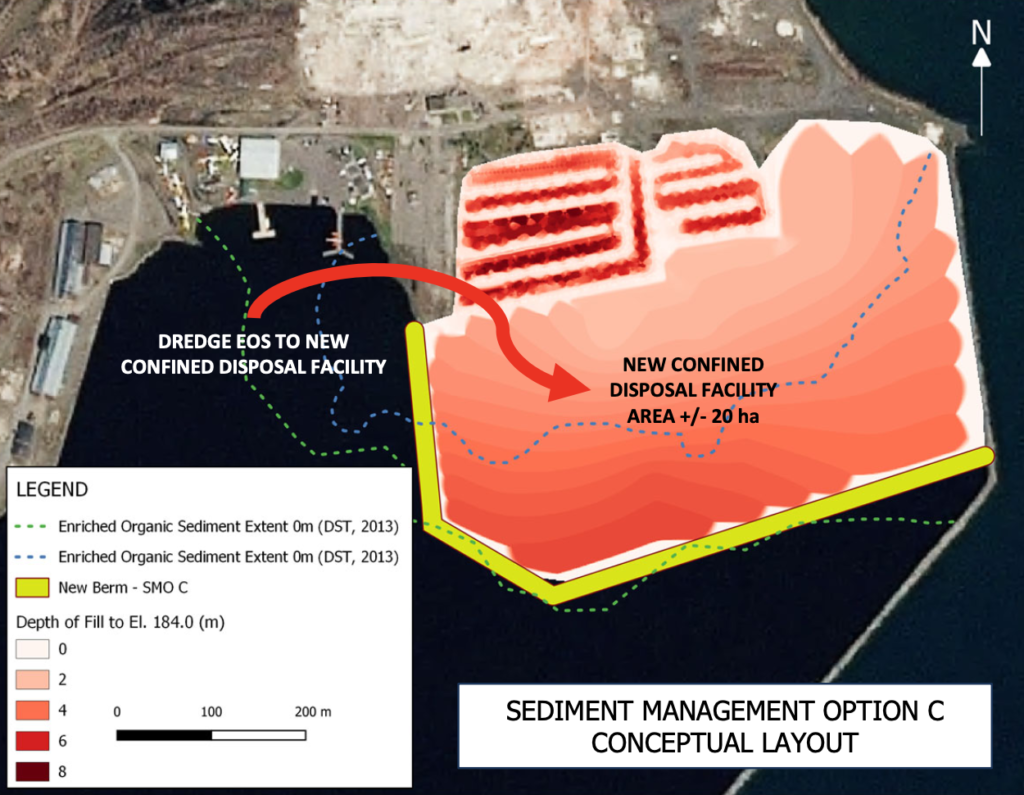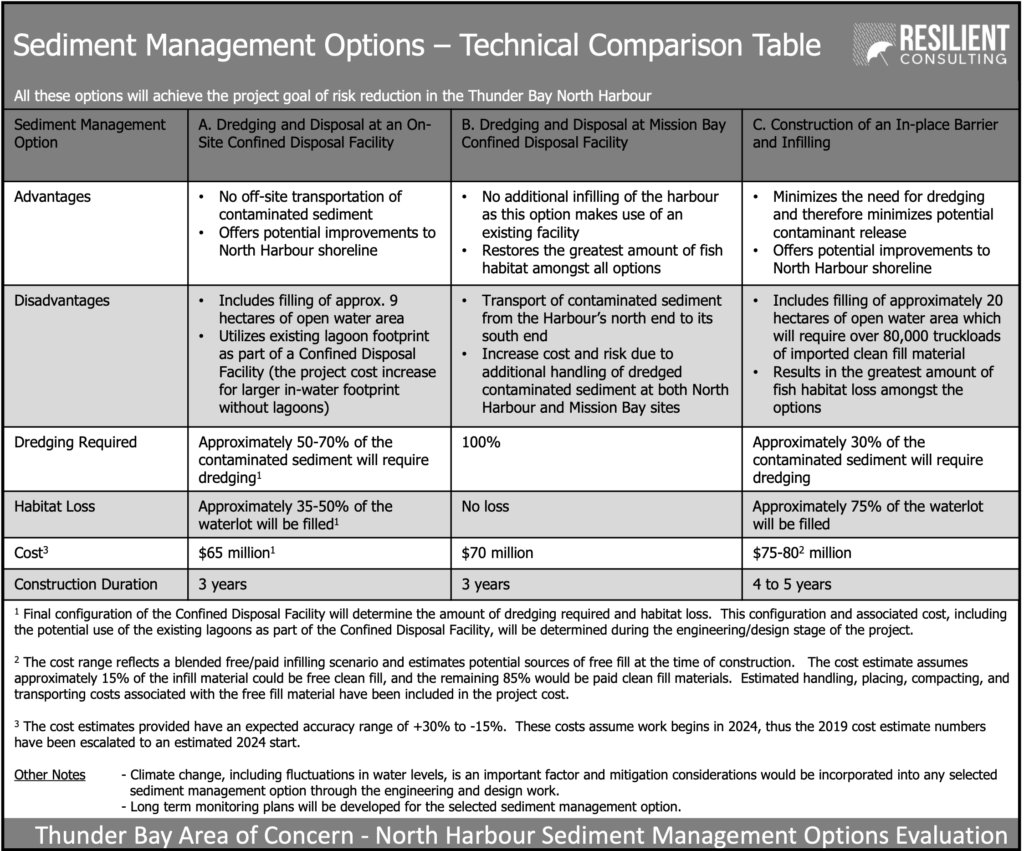Recent Updates
Moving from Phase I to Phase II of the Thunder Bay North Harbour Sediment Remediation Project.
Link to the Thunder Bay North Harbour Sediment Management Project Update. June 23, 2022
After reviewing the Thunder Bay North Harbour Working Group’s recommendation report, TBNH Senior Management Committee has agreed to accept the recommendation of SMO A (SMO A-managing the contaminated sediment through dredging and disposal at an on-site confined disposal facility).
There are three phases to the TBNH Sediment Remediation Project:
- Phase I – selection of the preferred Sediment Management Option (SMO) – completed
- Phase II – complete engineering design – in progress
- Phase III – implementation and monitoring
To this end, work is underway to prepare the tender document for the engineering design of SMO A.
With SMO A identified for the project, the Committee will re-convene to plan for the engineering design for the project. This Phase will include four main tasks:
Task 1: Completion of tender document for engineering design of SMO A
Task 2: Award contract for engineering design
Task 3: Prepare engineering design, cost estimate, permits and approvals
Task 4: Prepare specification and drawings for project implementation
The Committee is currently engaged with Task 1 above and will plan for the remaining tasks.
Here you can find more documents related to the Thunder Bay North Harbour Sediment Management Project:
Thunder Bay North Harbour Sediment Management Project Update – the full version of the memorandum that documents the work completed by the Committee for Phase I (selection of the preferred SMO)
Canada-Ontario Agreement (COA) on Great Lakes Water Quality and Ecosystem Health 2021 – sets out specific actions each government will take to protect and restore the Great Lakes
Overview of Issue
In 1987, the International Joint Commission identified 43 different Areas of Concern (AOCs) across the Great Lakes where the environmental quality had deteriorated to the point that the beneficial use of these aquatic areas was being impacted. Thunder Bay was identified as one of these areas of concern for a number of different reasons including the contaminated sediment in the Thunder Bay north harbour from historic effluent discharge of a former paper mill.


The site in question is contaminated with about 400,000 cubic meters of organic sediment deposited over 90 years of mill operations. This sediment is subsequently contaminated with mercury in concentrations that range from 2 to 11 ppm at the surface of the sediment to 21 ppm at depth. The sediment layer itself is composed of a relatively fibrous material with thicknesses ranging from 40 to 380 centimetres covering an area of approximately 26 hectares.

In order to remediate these areas of concern the Remedial Action Plan (RAP) was implemented which sought public input on the contamination and remediation efforts through their Public Advisory Committee (PAC). Over the years the PAC has received a variety of information on the contaminated sediment and the different options available to remediate it (Sediment Management Options or SMOs). Links to these reports and presentations are presented below.
Sediment Management Options for North Harbour
Find the proposed remediation options below:
Option A – Dredging and Disposal at an On-Site Confined Disposal Facility

- Construction of an on-site Confined Disposal Facility (may involve the existing lagoon footprint and/or the waterlot)
- Installing environmental controls, such as silt curtains or temporary sheet piling around the work area
- Removing impacted enriched organic sediment (EOS) by mechanical or hydraulic dredging (excavation under water)
- Placing the dredged enriched organic sediment within the Confined Disposal Facility
- Capping the Confined Disposal Facility after the enriched organic sediment has consolidated
Option B – Dredging and Disposal at Mission Bay Confined Disposal Facility

- Enhancing or building a new engineered cell within the existing Mission Bay Confined Disposal Facility which is operated by the Thunder Bay Port Authority, located at the south end of the Thunder Bay Harbour
- Installing environmental controls, such as silt curtains or temporary sheet piling around the work area
- Removing impacted enriched organic sediment (EOS) by mechanical or hydraulic dredging (excavation underwater)
- Dewatering the enriched organic sediment and treating the water as required
- Transporting the dewatered enriched organic sediment to the Mission Bay Confined Disposal Facility and placing it within that facility
- Capping the Confined Disposal Facility after the enriched organic sediment has been consolidated
Option C: Construction of an In-place Barrier and Infilling

- Installing environmental controls, such as silt curtains or temporary sheet piling around the work area
- Constructing a new berm around the limits of the enriched organic sediment and water lot boundary to the west
- Removing enriched organic sediment (EOS) located outside of the west berm by mechanical or hydraulic dredging (excavation underwater)
- Placing the dredged enriched organic sediment within the containment area
- Placing a thin-layer of sand to manage marginally contaminated sediments remaining outside of the newly constructed berm
- Infilling and capping the area within the berms over an approximate three-year period with a combination of free fill during the first year of infilling operations (such as concrete rubble or dredged materials from maintenance activities in the area) in conjunction with paid material (such as pit run material from local quarries)

Thunder Bay North Harbour Progress Highlights
Below, you’ll find some major milestones for the Thunder Bay North Harbour Area of Concern along the way:

2018 – Release of SEDIMENT MANAGEMENT OPTIONS EVALUATION – FINAL ADDENDUM, Thunder Bay North Harbour, City of Thunder Bay 2018, Cole Engineering.
2019 – Release of REVIEW OF INCINERATION AS POTENTIAL SEDIMENT MANAGEMENT OPTION, Technical Memorandum, Golder, 2019. Review of incineration as a potential sediment management option (SMO). Summary of the advantages and disadvantages of incineration, and the feasibility of this as an option. The review concludes that incineration is not feasible primarily due to increased costs and the risks associated with recovering vaporized mercury.
2019 – Release of PEER REVIEW OF THUNDER BAY NORTH HARBOUR SEDIMENT MANAGEMENT— OPTION 9, Technical Memorandum, Golder, 2019.
2019 – Release of GEOPHYSICAL SURVEY AT THUNDER BAY NORTH HARBOUR, TUNDER BAY, ONTARIO, Technical Memorandum, Golder, 2019. Geophysical survey of the North Harbour lagoon system using ground penetrating radar (GPR) technology to develop a bathymetric map.
2019 – Release of THUNDER BAY NORTH HARBOUR SEDIMENT MANAGEMENT OPTIONS UPDATE, Resilient Consulting, 2019. Further assessment and refinement of the sediment management options (SMOs) for the Thunder Bay North Harbour area. During previous work by Cole Engineering (2015), SMOs were assessed but a preferred option was not selected. This update provides additional collection and review of relative background information, further consideration of two sediment options, further revision of the cost estimates, and a review and update of the top-ranking SMOs.
2020 – Release of PEER REVIEW OF THUNDER BAY NORTH HARBOUR RISK ASSESSMENT, Technical Memorandum, Golder, 2019. Peer review of the previous risk assessment (conducted by Franz Environmental 2013). Overall, their review of the Franz report indicates that the work was “generally conducted in accordance with accepted methods and practices in the field of risk assessment, including guidance for federal contaminated aquatic sites”. Furthermore, Golder’s peer review concluded that “on balance, the risk characterization yields broadly similar conclusions to what Golder would have likely produced given similar scope.”
2020 – Release of MNO COMMUNITY INFORMATION SESSION ON THE THUNDER BAY NORTH HARBOUR SEDIMENT REMEDIATION OPTIONS, Métis Nation of Ontario Lands, Resources, 2020.
2020 – Release of THUNDER BAY NORTH HARBOUR SEDIMENT MANAGEMENT OPTIONS WORKING GROUP REPORT TO SENIOR MANAGEMENT COMMITTEE, Resilient Consulting, May 2020. The objective of this report is to build on previous work and to further assess the three SMOs currently under consideration by the Thunder Bay North Harbour Sediment Management Working Group.
2022 – Release of THUNDER BAY NORTH HARBOUR SEDIMENT MANAGEMENT PROJECT UPDATE, Government of Canada, June 2022. This memorandum documents the work completed by the TBNH Senior Management Committee for Phase I – selection of the preferred Sediment Management Option (SMO).
Thunder Bay North Harbour Presentations:
· September 7, 2017 – Métis Nation of Ontario
· October 2018 – Presentation to Working Group
· February 4, 2019 – Presentation to the City of Thunder Bay
· February 24, 2020 – Fort William First Nation meeting
· February 25, 2020 – Red Sky Métis Independent Nation
· February 25, 2020 – Métis Nation of Ontario
· February 26, 2020 – public meeting
· May 27, 2020 – Presentation to Working Group
· July 27, 2020 – City of Thunder Bay
More Resources
Check the links below to find more resources on Thunder Bay North Harbour area of concern:
